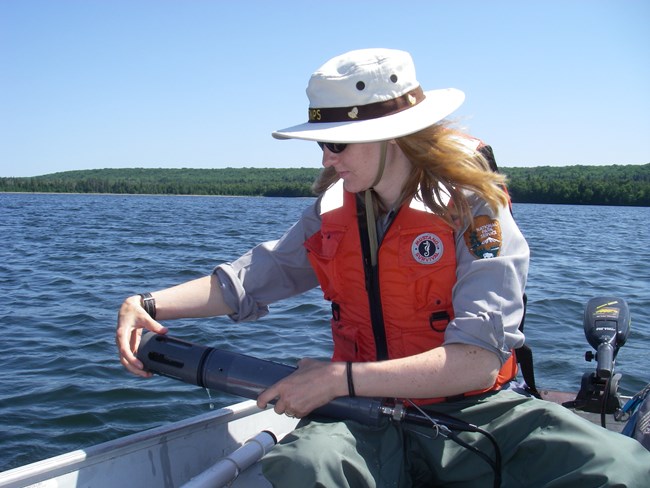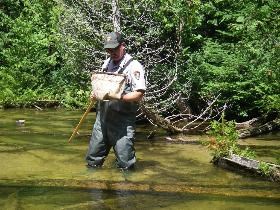
NPS photo Water resources are of prime importance at Pictured Rocks National Lakeshore. The park's science staff conduct annual inventory and monitoring projects to assess the overall condition of the park's inland lakes. By accumulating baseline data over many years, scientists can better understand each lake's natural features and therefore recognize changes when they happen – particularly human-caused changes that might require management action. Continued monitoring will help staff separate trends that might arise from human origins (such as climate change, acid rain, invasive species, nutrient run-off, impacts from high recreational use, and chemical contaminants) from natural fluctuations. As part of the Great Lakes Network, Pictured Rocks and other national park sites use the same testing protocols so that results may be analyzed not only for each individual park but for the Great Lakes region as a whole. The results will allow researchers to detect changes and trends on a much larger scale. 
NPS photo Other Studies For more information... |
Last updated: November 23, 2021
